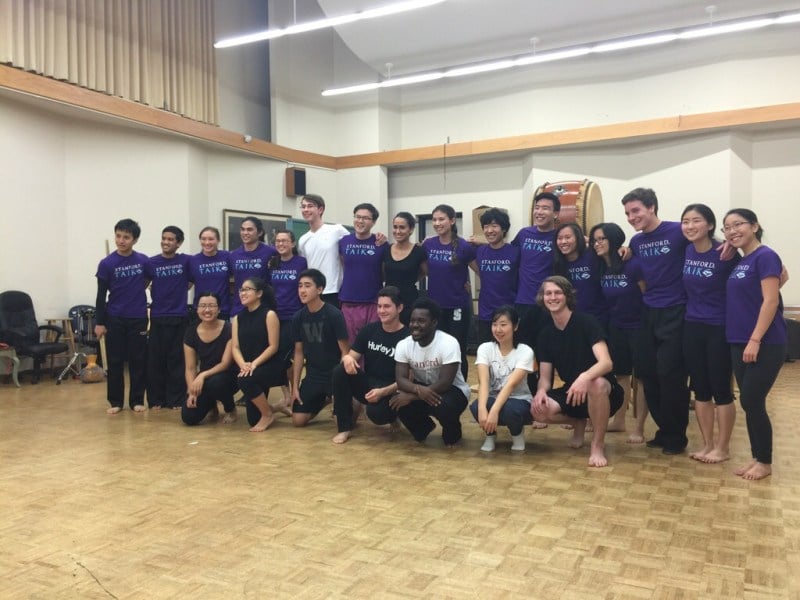A hushed silence fills the late night air, replacing the sounds of people cheering and cracking jokes. Everyone wonders what’s next. But no one dares to speak. Or breathe.
An excited yell erupts from the taiko team, a drumming group whose style originated in Japan. Another yell follows. Yet another, until the air is filled with sounds of shakers, drums, triumphant cries and dancing. People sway to the beat.
The song Stanford’s taiko team played tonight is called “Hanabi,” the Japanese word for “fireworks.” True to its name, the song includes sporadic, strong hits sounding exactly like the low booms of fireworks exploding high. The project on which the taiko team embarked is easier said than done: Rearrange Stanford Taiko’s traditional song, “Hanabi.” Stanford Taiko’s audition performance night is also a final test for the players trying out for the team; they will know whether they made the team or not the next day. Nerves run high.
There are a lot of different interpretations of one song, different takes and rearrangements of the same music depending on the person or the team. One team makes its primary theme a firework display that starts as a fizzle and ends in a large climax; another makes its top priority to weave in nonverbal communication through arm movement. One team builds a song entirely on a swing beat; another relies on suspenseful moments of silence. The taiko players go with whatever feels personal or creative.
As soon as the performance is over, the players huddle around. What was previously filled with smiles and brimming energy is now replaced with panting. Blisters and sores cover their hands, signs of long hours of dedication. They tell me they put in 10+ hours last week. But they play because they love the art of taiko, and they play because they are in the moment – an almost spiritual moment that is palpable and reaches the audience in a way recorded videos will never capture. Smiles and eye-contact, yells and dancing, are all part of one performance. In this performance, they are no longer university students – they are storytellers conveying the energetic ambience filling the festive air with fireworks.
Every taiko team sounds and feels different, but Stanford Taiko especially gives the impression of a close, friendly community. Japanese-Americans, native Japanese and those with absolutely no prior exposure to Japanese culture all work together as one team. From those with no musical background to those who played in the Stanford orchestra, hobbies are eclectic and nationalities are diverse. And no wonder: Taiko is not one thing. Taiko is a mixture of spatial movement, whether it be dance or martial arts, sound or spirit. It is a genre of its own that hovers between a musical group and a team sport. Ultimately, the only true requirement is energy and a sense of fun.
Contact Maimi Higuchi at maimih ‘at’ stanford.edu.
